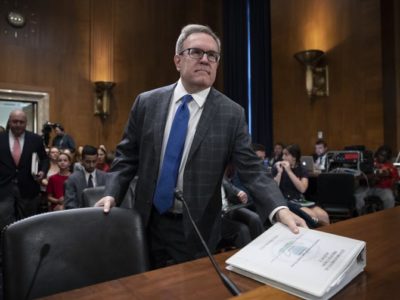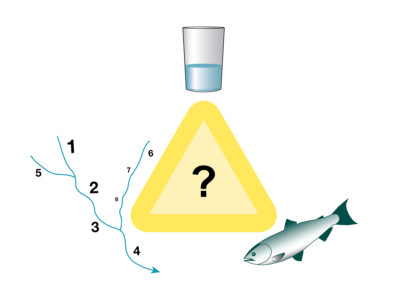Regulatory Policy
Supreme Court Takes a Knick Out of Regulatory Takings Law
Justices Curb Ripeness Rule; Open Federal Courts to Takings Litigation
In the final, major environmental law decision of its current Term, the U.S. Supreme Court handed property rights advocates a major victory while repudiating an important regulatory takings precedent the Court had itself fashioned and announced 34 years ago. The case is Knick v. Township of Scott. By a narrow 5-4 vote that split …
Continue reading “Supreme Court Takes a Knick Out of Regulatory Takings Law”
CONTINUE READINGGuest Blogger Nick Bryner: Cooking the Books While Cooking the Planet: A First Look at the EPA’s ACE Rule
Final Rule Changes Baseline Assumptions & Approach to Cost-Benefit Analysis in Attempt to Justify Weak Standards
Yesterday, the Trump EPA released its long-awaited response to the Obama-era Clean Power Plan. At first glance, the final rule has been carefully crafted in an attempt to avoid several glaring legal vulnerabilities of the rule—and to obscure the obvious inadequacy of the Administration’s response to climate change. The EPA has found many contradictory ways …
CONTINUE READINGThe Forgotten Environmental Legacy of Jimmy Carter
Carter saved millions of acres of wilderness, signed the Superfund law, and began the renewables revolution.
Many people today know Jimmy Carter as an ex-President who has strongly advocated for human rights. His Presidency is probably best remembered for the Iranian Hostage crisis. His post-presidential career was at least as notable as his time in the White House. Historians find his presidency flawed by micro-management and lack of rapport with the …
Continue reading “The Forgotten Environmental Legacy of Jimmy Carter”
CONTINUE READINGPollution Bursts and Public Health
EPA needs to give much more serious thought to controlling bursts of pollution.
When a facility installs and operates the required pollution control equipment, we normally think of the pollution problem as solved. But there still may be bursts of pollution associated with start-up, shut-down, accidents or external events. A recent study of pollution in Texas shows that these events have substantial health impacts, involving significant deaths and …
Continue reading “Pollution Bursts and Public Health”
CONTINUE READINGUpdates on the War on Science
The Trump Administration continues its campaign to suppress science.
The Trump Administration’s hostile attitude toward science has continued unabated. The Administration has used a triad of strategies: efforts to defund research, suppression of scientific findings, and embrace of fringe science. Budget.Administration continues to favor deep cuts in research support. Its initial 2020 budget proposal calls for a 13% cut to the National Science Foundation, a 12% cut at …
Continue reading “Updates on the War on Science”
CONTINUE READINGA Motley Crew
The leadership at EPA has lots of experience, much of it in opposing environmental protection.
The best-known figure at EPA is Andrew Wheeler, the ex-coal lobbyist who is now the fox in charge of the henhouse. But it’s worth looking at some of the key remaining staff so we can see just what’s happened to EPA since Trump took office. Compared to some of Trump’s cabinet appointments, they all look …
Continue reading “A Motley Crew”
CONTINUE READINGGuest Blogger Michael Panfil: Supreme Court Declines to Hear New York and Illinois Clean Energy Cases Challenging Zero Emission Credits
Cert. Denials Have Significant Implications for Environment, Human Health, and Clean Energy
States are on the leading edge in crafting pathbreaking climate and clean energy policy. They rely on longstanding authority to do so to further their citizens’ welfare and wellbeing. That bedrock authority recently received important reaffirmation from the Supreme Court, which last month declined petitions for review in two cases with important implications for power …
CONTINUE READINGLaw Schools and the Environment: East Coast Version
Environmental law centers aren’t just a California thing. .
Readers of this blog probably have some sense of what the environmental law centers at UCLA and here at Berkeley are doing. There are too many environmental law centers to do a a comprehensive nationwide survey, and trying to pick a top-10 list would be completely subjective. To keep this post manageable, I’ll only discuss …
Continue reading “Law Schools and the Environment: East Coast Version”
CONTINUE READINGMaking Key Policy Decisions in Advance of Droughts
Part 6 in a Series on Improving California Water Rights Administration and Oversight for Future Droughts
It’s hard to respond effectively to a crisis when you don’t have clearly defined priorities. This is true for sudden-onset crises, like floods and wildfires, and also for slow-onset crises, like droughts. My recent posts have explored why the State Water Resources Control Board (Board) should develop a contingency-based framework to support its drought decisions …
Continue reading “Making Key Policy Decisions in Advance of Droughts”
CONTINUE READINGGoverning New Biotechnologies for Biodiversity Conservation
The fourth in a series examines how international institutions have responded
The previous two posts in this series described how and why genetically modified organisms (GMOs) could be introduced into wild populations, either “typically” modified ones that would transmit their altered genes ineffectively or those with “gene drives” whose changes would quickly propagate through the entire population. In both cases, their potential applications include helping conserve …
Continue reading “Governing New Biotechnologies for Biodiversity Conservation”
CONTINUE READING










